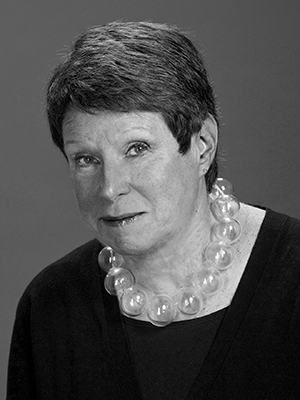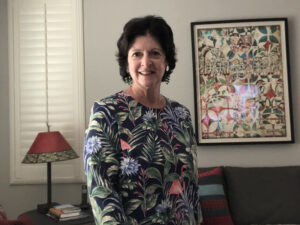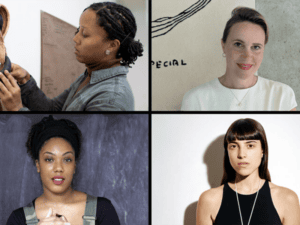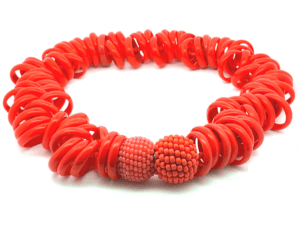
At its most basic level, Monomater posed a challenge to current Cranbrook students in the metalsmithing department and a few select alumni: think differently about contemporary jewelry. Eichenberg’s concept involved asking them to create a cogent statement in one material; if multiple materials were used, they had to have similar sensibilities.
The idea was based upon Eichenberg’s view that jewelry today is primarily about collage. She first made this assessment several years ago when she saw a brooch fabricated from antler bone by Barcelona jeweler Gemma Draper whom she subsequently invited to study at Cranbrook. Since then, the idea has resurfaced in various iterations as collaborative projects for the metalsmithing and three-dimensional design departments.
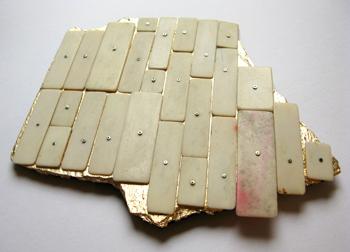
Instituted in 1932 by Saarinen, its first director, the academy’s educational program continues to foster and promote studio practice at the graduate level without the restrictions of a prescribed curriculum, specific requirements, or formal classes. Faculty are hired with the expectation that they will incorporate working studios within their respective departments to serve as paradigms for the students. Cranbrook’s mantra is very transparent: to focus on exploring the interdisciplinary relationship of the arts and collaboration.
Cranbrook Academy is part of an educational enclave distinct from the cookie-cutter McMansions, faux chateaux and problems of the modern day metropolis that surrounds it physically. Cranbrook is in Bloomfield Hills, a suburb with few sidewalks, whose residents, like those of its adjacent major urban center Detroit, depend on the automobile for transport. Cranbrook’s individualistic physical plant tends to isolate it even more from its environs. Cranbrook students embrace this isolation and immerse themselves in their work. Eichenberg considers this to be one of the advantages of being a Cranbrook student. Socialization and informal learning sessions about art merge at mealtime or during informal gatherings in the centrally located departmental kitchen.
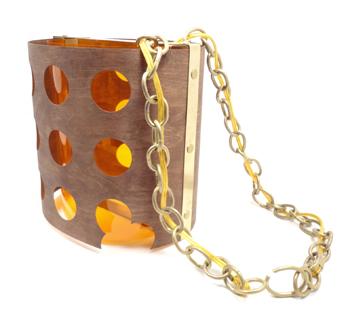
The approach that Eichenberg has introduced is modeled upon her own Rietveld training. First, concept must be paramount: her students – her ‘partners in crime’ – must go beyond metal to explore a wide range of materials and techniques in order to successfully convey their message. As Eichenberg suggests, ‘Our work is not formed by technical skills related to one material field but looks to the right materials to address concepts and ideas. . . . Materials are not taken for granted – they [the students] must question if this is the right material. This investigation gives them insight into their own handwriting – and creates more possibilities to [be] identified and shaped.’(Eichenberg) The resulting work ranges from jewelry to objects and environmental sculptures with affinities in decorative arts and design. Because these forms are executed in a wide variety of media, they are thought-provoking and exemplify the dramatic changes occurring in the field of metalwork today.
Craftsmanship – the skills Eichenberg expects students to have mastered as undergraduates before coming to Cranbrook – is important only when used to successfully realize the concept. More important to her is the conviction that students learn best when exposed to a variety of conflicting ideas. Eichenberg’s goal is to create an open environment in which she and the students can learn from one another, respond to each other’s ideas and not fear to take risks.
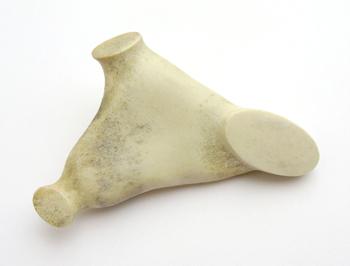
Weekly critiques in her department differ dramatically from those in other art schools where student presentations of work are followed by comments from teachers – sometimes harsh – and from colleagues. Modifying an approach used elsewhere at the academy, the work under consideration is first evaluated in a written statement prepared and read aloud by another student. Subsequent discussion involves all departmental students as well as any outside artists who have been invited to work for a period of time in the department; Eichenberg often simply serves as moderator. The student who created the work is allowed to provide input only after considerable discussion has transpired. In this way, the work is evaluated on its own merit rather than on the maker’s statement of intent.
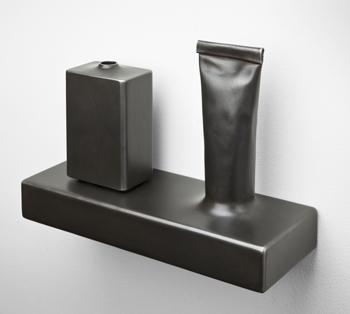
Parallels for what Eichenberg is doing at Cranbrook have existed at a number of institutions in the United States and abroad, including the California Institute of the Arts, Los Angeles, during John Baldessari’s tenure in 1970–88. Nonetheless, a new generation of makers has emerged since Eichenberg’s arrival. The exhibition Monomater, which included objects by emerging talent such as Suzanne Beautyman, Sid Caldwell, Gemma Draper, Elizabeth Boyd Hartmann, Susan Hoge, Travis Lewis, David Licata, Katie MacDonald, Tiffany Massey, Edgar Mosa, Seth Papac and Adam Shirley, resoundingly demonstrated to the larger SOFA Chicago audience that these artists are already expanding the definitions of contemporary metalwork.
The exhibition Monomater was accompanied by a panel discussion at SOFA Chicago co-sponsored by Cranbrook Academy of Art and AJF and featuring Eichenberg, Gemma Draper, and Seth Papac with moderator Davira S Taragin.

